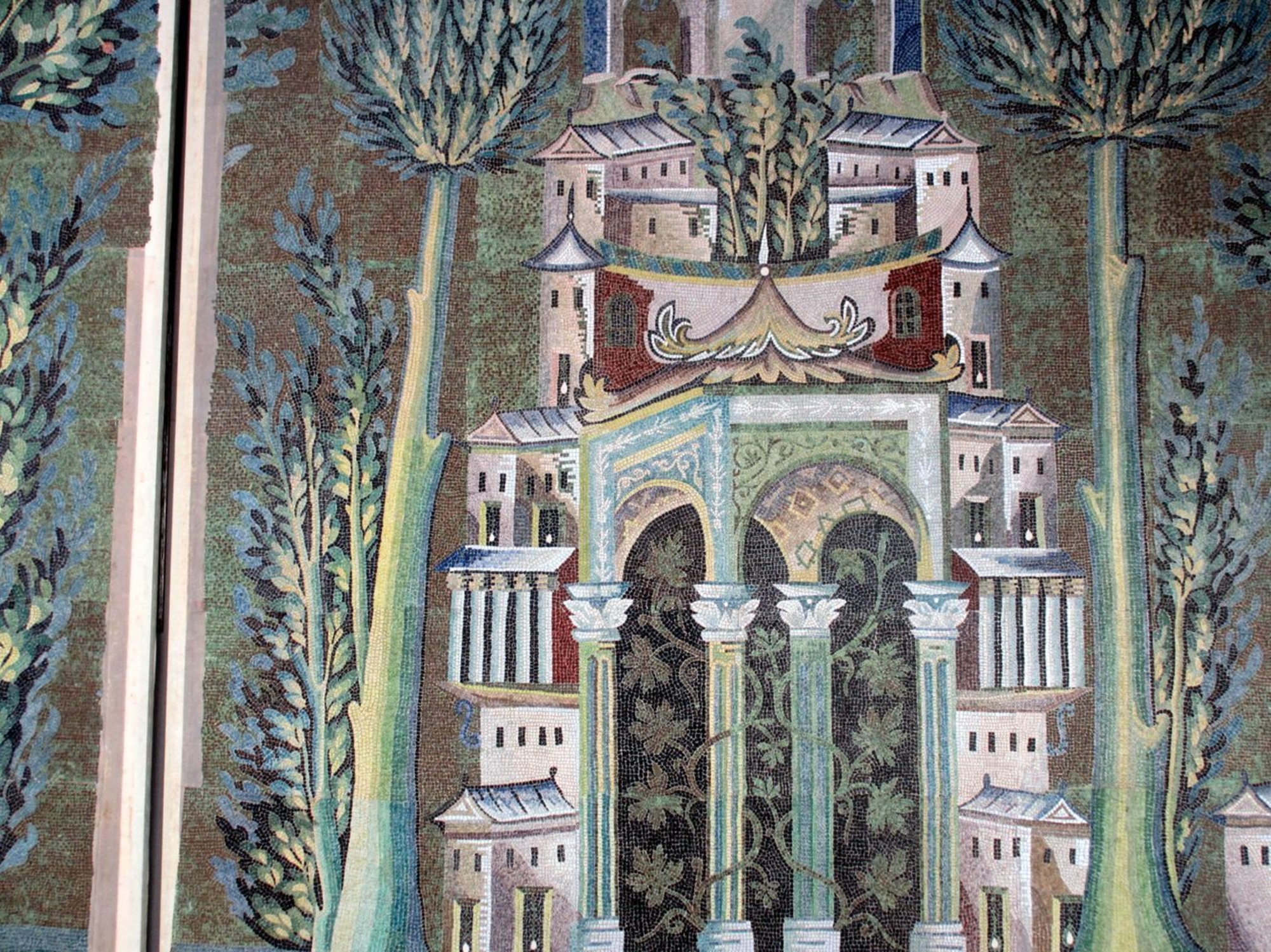
- Home
- The mosaic decoration
- A sumptuous and mysterious decor
- Trees and architecture
”The mosaics above are coloured glass with gold, silver and mother-of-pearl; several trees are depicted, along with cities, fortresses, seas and all kinds of images, the representation of which is not forbidden" - Al-Dimashqî (1256-1327).
Mosque decoration
Al-Dimashqi's brief description gives us an idea of the sort of images that decorated the great mosque. No living beings were depicted in the mosaics. Islam forbids the representation of people or animals in a religious context, such as a mosque, or on a Koranic manuscript. They are, however, encountered in non-religious settings, such as in palaces, and on everyday objects.
An incomplete decoration
The mosaics depict lush green landscapes planted with fruit trees, and whimsical architecture. The largest series runs under the western portico, known as the "Barada panel", as it was thought by some to depict the banks of the river that flows through Damascus. A large number of the mosaics were probably destroyed in the city’s many fires and earthquakes. Made from fragile materials, they also required constant maintenance. Only some of the original decorative programme that spanned the porticoes, entrances, the main aisle and cupola in the 14th century survive today.
Interpreting the decorations
The mosque’s fabulous decoration has been interpreted in many ways. Its original meaning was already obscure by the Early Middle Ages. Unlike Byzantine mosaics or some contemporary Syrian mosaic floors, the great mosque’s decorations did not bear descriptions. Since surviving Umayyad texts do not shed light on their meaning, we must rely on later interpretations.
More modern authors have seen the opulence of its landscapes and the perfect beauty of the mosaics as a metaphor for paradise. While widely supported, this theory is far from conclusive.
Some have interpreted the depiction of the cities of the Umayyad Empire as a vision in miniature of the territories conquered by the Arabs. The geographer al-Maqdisi was the first to suggest this reading in the 10th century:
”Few trees or lands known to us are not depicted on these walls".


